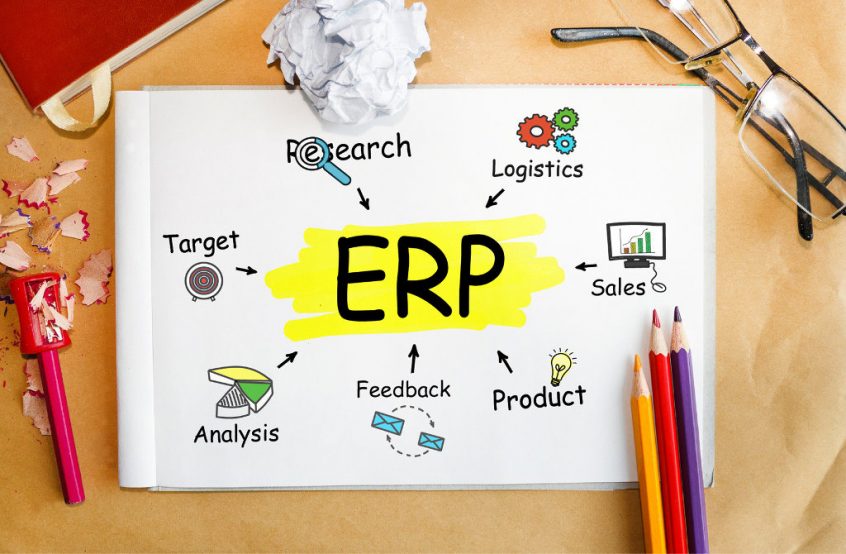Share this Post
Traditionally, „on-premises deployment“ has been the watchword for enterprises reluctant to entrust their operational data, customer records, intellectual property, or security to an outside agency – be that in the provision of network and telecommunications infrastructure, data handling and storage, security management, or the installation and running of systems and software.
But the escalating demands of the modern business environment – which may range from the need for terabyte-level data storage, to NASA-level computational powers, with real-time communication and analytical response – have seen a shift to off-premises resources, infrastructure, and services in the cloud.
Enterprise Resource Planning (ERP) systems are not excluded from this trend. Even organisations that run their own ERP software in-house may feel the occasional need for an injection of external resources, to extend their capabilities. And custom modules or add-ons sourced from the cloud can help fulfil this need.
The Cloud Advantage For Businesses
In general terms, cloud-based software solutions have the advantage over in-house systems, in that the costs and overheads associated with providing IT infrastructure like hardware and servers, or IT expertise for maintenance and management of a system are transferred to the cloud host or service provider. This is the case if an ERP system is entirely cloud-resident, or for individual ERP modules obtained from a cloud provider.
Updates or upgrades of the cloud ERP platform or modules are handled by the vendor (for commercial systems), or made available via the community ecosystem of an open source ERP platform. And as with open source systems, the costs for upfront purchase or application software licensing are drastically reduced, or eliminated altogether.
Specific Solutions To Specific Problems
Even with the most forward-looking management or the most skilled IT department in existence, an in-house ERP system that’s been fully configured may still fall short of some of the requirements that a business has to meet.
Changes in market conditions or advances in technology may render existing modules obsolete and incapable of meeting the demands of the moment – or new circumstances may arise that require processes or operations to be handled in a way that isn’t catered for by any part of an existing set-up.
It’s in cases such as these that turning to a point solution which has been specifically designed to cope with a particular problem, process, or use case becomes the most appropriate option.
If you’re using an on-site ERP system that’s open source (and have access to a skilled development team, either in-house or through outsourcing), then crafting your own point solutions is a possibility – though it may prove to be an expensive and time-consuming one.
Shopping around for a pre-packaged ERP module which has already been professionally designed by a cloud-based vendor/provider, and proven compatible with your particular use case may be the more cost-effective and time-efficient choice.
There’s a growing demand for this type of service, with increasing numbers of ERP software providers making cloud-based point solutions a feature of their online marketplaces.
Successes In Retail
The evolution of digital commerce and the need for „omni-channel“ transactions enabling businesses to offer their customers a selection of „touch points“ – web sites, eCommerce portals, mobile apps, physical stores, etc. – has been fuelling growth in one sector of the point solutions market for ERP. Companies in various industries have been meeting the need to process transactions and interactions with their consumer bases through individual Point of Sale or PoS instances.
Point of Sale systems have been around since the 1970s, where their use was pioneered within a few specific industries – notably the retail and hospitality sectors. Cash registers with credit-card handling facilities and order processing systems were deployed at shops, supermarkets, and other sales outlets, while check-in, inventory, and customer processing stations were required at hotels, guest-houses, casinos, and other such venues.
With time, these PoS systems have evolved into sophisticated systems with their specialised software and management platforms based in the cloud. Point of Sale systems are now routinely deployed as subscription-based Software as a Service or SaaS – and they’re available on demand to any enterprise with an internet connection, and a need to process spot transactions for its consumers.
As part of the Sales, Marketing, Inventory, and Accounting cycles of Enterprise Resource Planning, these PoS systems represent cloud-based point solutions which may be called upon by businesses to meet specific needs in specific locations.
It Takes A Village…
Obtaining any service or module from a cloud vendor puts businesses at the mercy of the provider, to some extent. For delivery and management of these solutions, companies have to rely upon the integrity and efficiency of a third party, for network and service availability, security and redundancy/failover provision (Disaster Recovery, or DR), and in the way their data, customer records, and intellectual property are handled.
Some or all of these functions may be handled by the cloud provider’s supply chain of partners and contractors. In the case of open source ERP platforms, this ecosystem includes the ERP software’s developer and user community – which increases the options and services available to those in the market for cloud-based point solutions.
Share this Post


